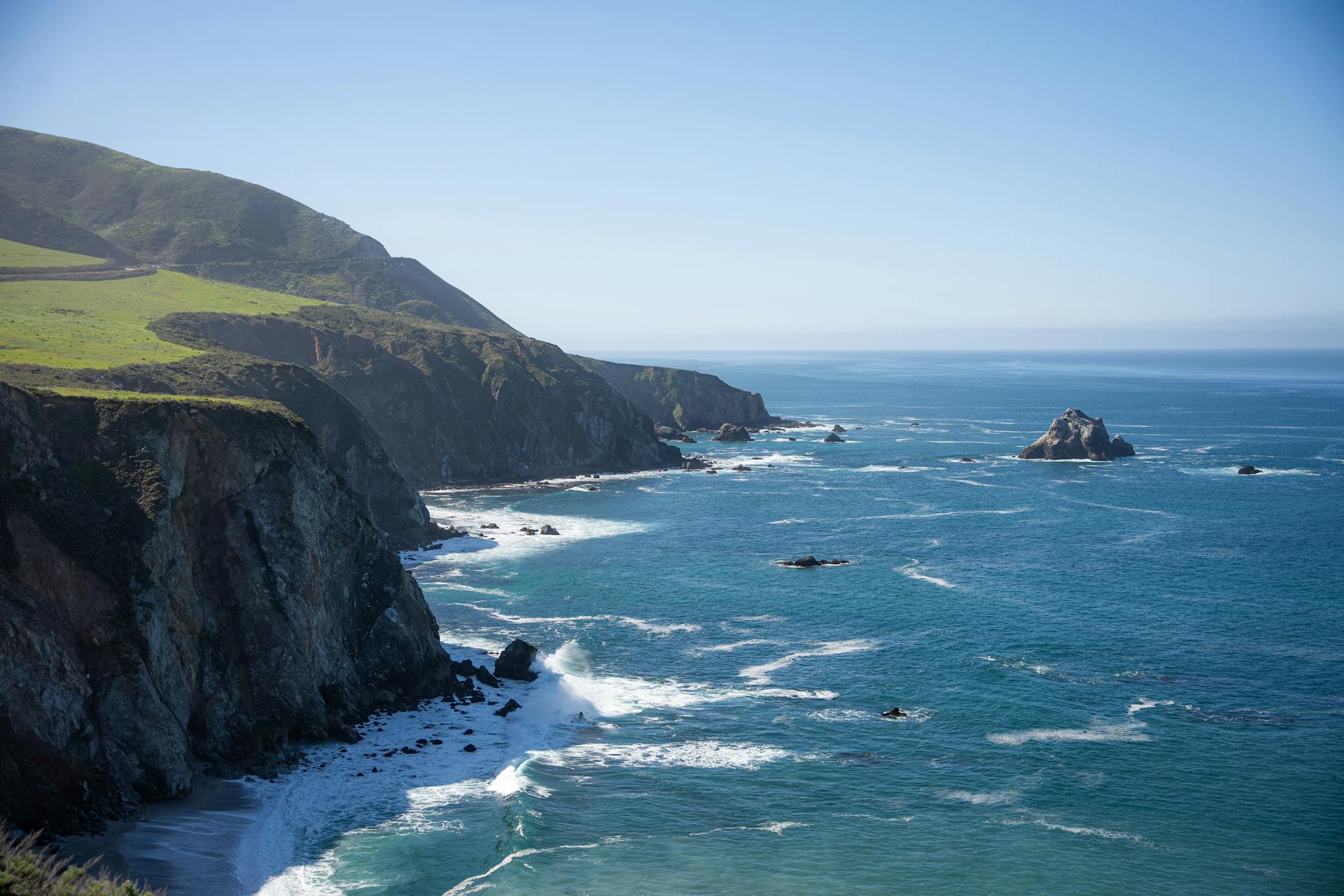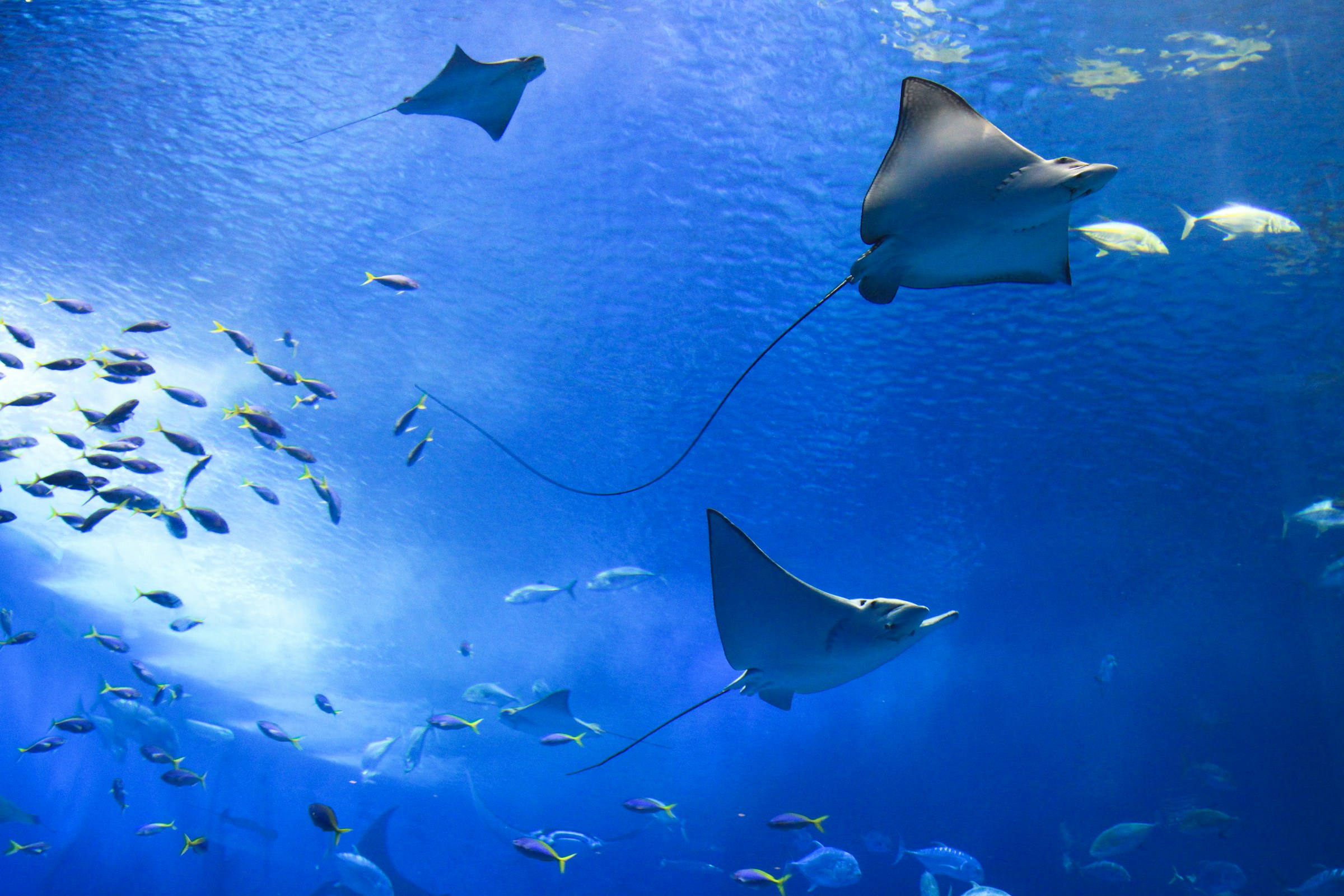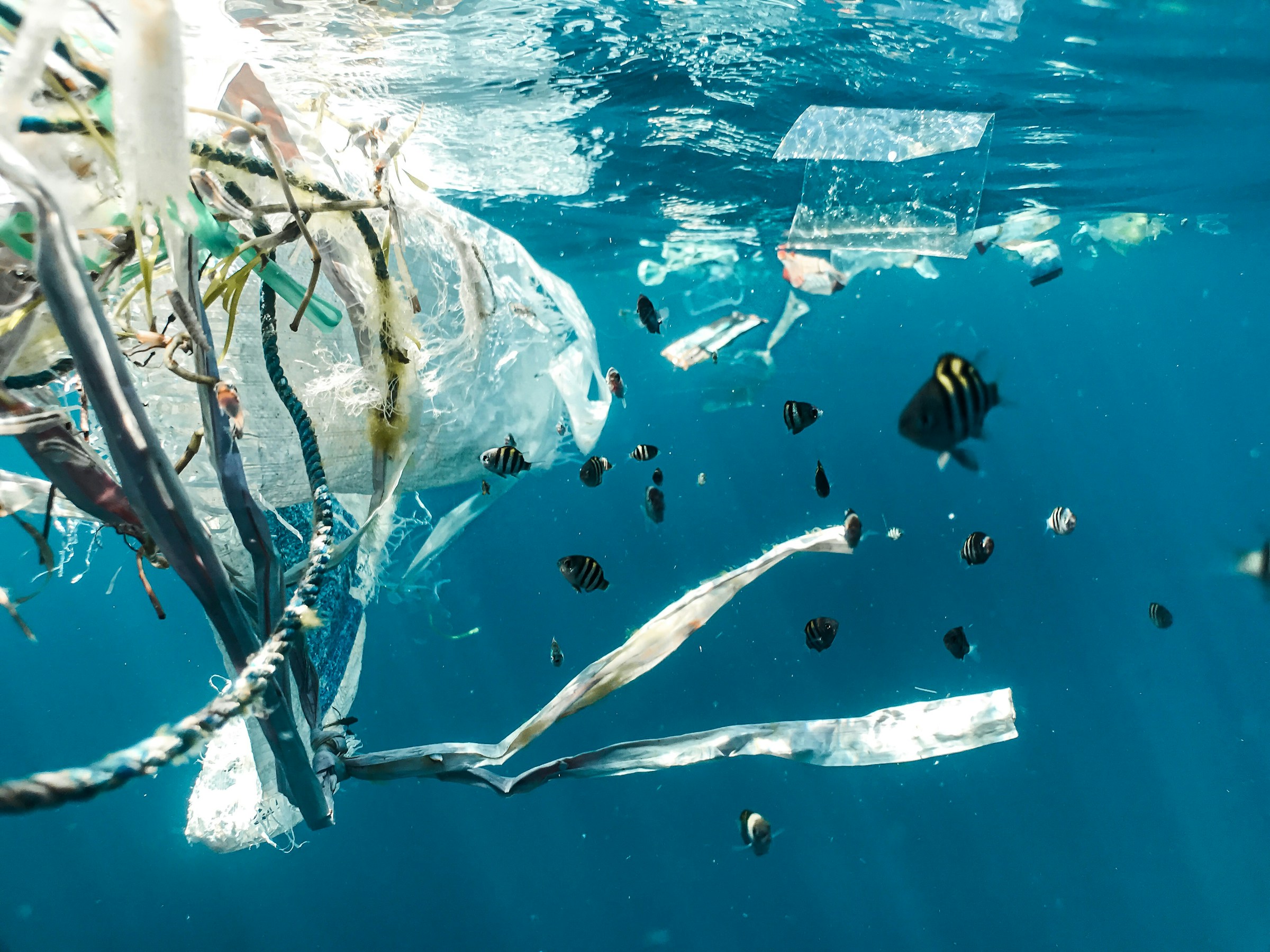The world’s oceans, covering over 70% of the Earth’s surface, are home to some of the most diverse and vital ecosystems on the planet. Yet, these marine environments are facing unprecedented challenges that threaten not only marine life but also the very health of our planet. From the vast coral reefs teeming with life to the deep sea ecosystems that regulate climate and oxygen levels, the oceans are in urgent need of protection.
Marine conservation is not just a matter of saving beautiful underwater landscapes—it’s essential for preserving the delicate balance of life on Earth. Oceans support an extraordinary variety of species and play a critical role in regulating the global climate, producing oxygen, and providing food and livelihoods for billions of people. However, they are under threat from a growing list of dangers, including pollution, overfishing, and the catastrophic effects of climate change. As marine ecosystems struggle to survive these pressures, a growing number of global efforts are rising to the challenge. From marine protected areas to innovative coral restoration projects, the fight to safeguard our oceans is gaining momentum. In this article, we explore some of the most impactful marine conservation initiatives happening worldwide and why they’re crucial for the future of our planet.
Marine Protected Areas (MPAs)
Marine Protected Areas (MPAs) are designated regions of the ocean where human activity is restricted to safeguard marine ecosystems and biodiversity. These areas play a crucial role in preserving vital habitats, such as coral reefs, seagrass beds, and deep-sea ecosystems, by limiting fishing, tourism, and other harmful activities. MPAs provide marine species with the opportunity to thrive in a relatively safe environment, helping to restore balance to ecosystems and preserve marine biodiversity for future generations.
Some of the most successful MPAs globally highlight the power of these conservation efforts. The Great Barrier Reef in Australia, one of the most iconic MPAs, spans over 344,000 square kilometers and supports a staggering array of marine life, including over 1,500 species of fish. It is a prime example of how an MPA can not only protect biodiversity but also support sustainable tourism, contributing to the local economy while preserving ecological health.
Another exemplary MPA is the Papahānaumokuākea Marine National Monument in Hawaii, USA. This vast protected area spans over 1,500 miles of the Pacific Ocean, encompassing pristine coral reefs and unique deep-sea ecosystems. Designated as a UNESCO World Heritage site, it is one of the largest fully protected marine conservation areas in the world, safeguarding millions of seabirds, marine mammals, and endangered species.
In the Indian Ocean, the Marine National Park of Seychelles offers an outstanding model of marine conservation. This MPA helps protect the biodiversity of the region’s coral reefs and the waters surrounding the islands. Efforts within the park have led to increased fish populations and improved coral health, showcasing the positive effects of marine protection.
Coral Reef Restoration Projects
Coral reefs are often referred to as the “rainforests of the sea,” providing habitat and food for a quarter of all marine species. They are essential for coastal protection, buffering shorelines from storms and erosion. However, coral reefs are increasingly threatened by rising sea temperatures, pollution, and destructive fishing practices. Coral restoration projects are vital for reversing some of the damage done and ensuring these ecosystems remain functional.
One major initiative is ReefBase, a global platform that supports coral reef restoration by providing tools, data, and guidance for local conservation efforts. It connects communities, researchers, and policymakers to share knowledge and best practices, allowing for coordinated action to protect and restore coral reefs.
In Southeast Asia, the Coral Triangle Initiative focuses on conserving the world’s most biodiverse marine region. This multinational effort brings together six countries—Indonesia, Malaysia, the Philippines, Papua New Guinea, Timor-Leste, and the Solomon Islands—to promote sustainable practices and restore damaged coral reefs. This collaboration has led to significant improvements in coral health and the overall resilience of the Coral Triangle.
In the United States, Restoring Florida’s Coral Reefs is a large-scale restoration effort aimed at reviving the coral ecosystems that surround the Florida Keys. Through innovative techniques such as coral farming and transplanting, the project has shown promise in restoring damaged reefs, with thousands of coral fragments being returned to their natural habitats.
Anti-Plastic Campaigns
Plastic pollution is one of the most pervasive threats to marine life. Every year, millions of tons of plastic enter the oceans, endangering marine species, disrupting ecosystems, and damaging coral reefs. Marine animals often mistake plastic for food, leading to ingestion, entanglement, and death. In response to this growing issue, numerous anti-plastic campaigns have emerged to tackle the problem at its source.
One of the most ambitious projects is The Ocean Cleanup Project, which aims to remove plastic from the Great Pacific Garbage Patch, one of the largest concentrations of plastic waste in the ocean. By using specially designed systems to collect and extract plastic debris, this initiative offers a promising solution to the cleanup of our oceans.
The Surfrider Foundation’s Plastic Pollution Campaign is another notable effort, focusing on raising awareness and advocating for policies to reduce plastic waste. The foundation works on local and global levels to reduce single-use plastics, promote recycling, and push for legislation to ban plastic items that harm marine ecosystems.
Plastic Free Oceans is a global initiative encouraging businesses, governments, and individuals to reduce their plastic footprint. By engaging communities and promoting sustainable alternatives, this campaign seeks to inspire lasting change in the way plastics are produced and consumed worldwide.
Sustainable Fisheries Management
Sustainable fishing practices are crucial for maintaining healthy fish populations and ensuring that ocean ecosystems remain balanced. Overfishing has led to the depletion of many fish stocks, disrupting food webs and harming coastal economies that rely on fishing for their livelihoods. Sustainable fisheries management aims to prevent overfishing, protect marine habitats, and promote responsible fishing practices.
The Marine Stewardship Council (MSC) plays a key role in certifying fisheries that meet rigorous sustainability standards. MSC-certified fisheries are required to adhere to strict guidelines to ensure fish populations remain stable and ecosystems are preserved. This certification has become a hallmark for sustainability in seafood markets worldwide.
The Fishery Improvement Projects (FIPs) are another initiative aimed at improving the sustainability of fisheries. These projects, often led by governments, NGOs, and local fishers, focus on enhancing the management and practices of fisheries to meet sustainability standards. By targeting specific fisheries and regions, FIPs have proven successful in reducing overfishing and supporting sustainable practices.
Global efforts, such as Greenpeace’s Global Tuna Conservation Efforts, are also crucial in protecting endangered species like tuna, which are often caught through unsustainable and destructive methods. Greenpeace advocates for stronger regulations and greater accountability in global tuna fisheries, aiming to prevent further decline of tuna populations and other marine species.
Climate Change Mitigation and Adaptation
The oceans are greatly affected by climate change, particularly through rising sea temperatures, ocean acidification, and increased frequency of storms. These changes threaten marine life, especially species that rely on stable temperatures and chemical conditions to survive, such as corals and shellfish. Marine conservation efforts are vital in mitigating and adapting to the effects of climate change.
One innovative approach is the Blue Carbon Initiative, which focuses on conserving and restoring coastal ecosystems like mangroves, seagrasses, and salt marshes, which act as natural carbon sinks. By protecting these areas, the initiative not only preserves biodiversity but also helps to capture and store large amounts of carbon dioxide, reducing the impacts of climate change.
The Ocean-Climate Solutions initiative by The Nature Conservancy promotes a holistic approach to addressing both climate change and ocean health. This includes efforts to reduce carbon emissions, protect carbon-rich ecosystems, and increase the resilience of marine habitats to the impacts of climate change.
At international forums like COP26, ocean-focused discussions have gained prominence. By recognizing the role oceans play in climate regulation, these discussions aim to integrate ocean health into broader climate strategies and policies, ensuring that marine ecosystems are included in global efforts to mitigate climate change.
Community-Based Marine Conservation
Marine conservation is not only a top-down effort from governments and organizations but also relies heavily on the involvement of local communities. Community-based conservation puts power in the hands of those who depend most directly on marine resources, empowering them to protect the environments they rely on. By integrating local knowledge, traditional practices, and modern conservation science, these initiatives can be both sustainable and deeply impactful.
One exemplary initiative is The Manta Trust, which focuses on the conservation of manta rays and their habitats. This global organization works with local communities in areas like Indonesia, the Maldives, and Fiji, where manta rays are not only ecologically important but also a source of income through eco-tourism. The Manta Trust’s community outreach efforts have led to better protection of manta rays, increased local involvement in conservation, and the creation of manta ray sanctuaries.
The Gili Shark Conservation Project in Indonesia is another success story of community-based conservation. This initiative focuses on the protection of shark populations in the Gili Islands, a region known for its vibrant marine biodiversity. By working with local fishermen and dive operators, the project has helped reduce shark hunting while promoting sustainable eco-tourism. The project also engages local schools and communities to raise awareness about the importance of shark conservation for marine health and economic stability.
In the Philippines, community-led marine sanctuaries have been an essential part of local marine protection efforts. Many coastal communities have established their own marine sanctuaries, where fishing is either limited or banned entirely to allow fish populations to recover. These sanctuaries have proven highly effective, leading to increased fish stocks, better coral health, and a more sustainable local economy.
Innovative Technology in Marine Conservation
Technology plays an increasingly crucial role in monitoring and conserving marine ecosystems. Advances in satellite tracking, drones, artificial intelligence (AI), and other technologies are transforming the way conservationists assess and protect the oceans. These tools allow for more efficient data collection, precise monitoring, and even real-time action in protecting marine life.
For example, satellite monitoring has become a vital tool in combating illegal, unreported, and unregulated (IUU) fishing. By tracking fishing vessels from space, organizations can pinpoint illegal activities in real time, providing authorities with crucial information for enforcement. This technology has significantly improved the ability to protect marine protected areas and enforce sustainable fishing practices.
Drones are also being used to restore and monitor coral reefs. Drones equipped with high-resolution cameras can fly over coral reefs, capturing detailed images and videos. These images are then analyzed to assess reef health, track coral bleaching, and identify threats such as coral disease or pollution. Additionally, drones are being used in reef restoration efforts, where they assist in planting coral fragments in areas that have been damaged by human activity or climate change.
Artificial intelligence is another groundbreaking tool in marine conservation. AI models are being used to track marine species, analyze large datasets from ocean monitoring systems, and predict how marine ecosystems will respond to changes such as ocean acidification or warming temperatures. AI has the potential to revolutionize marine conservation efforts by enabling quicker and more accurate decision-making.
Global Partnerships and Policies
The scale of marine conservation challenges requires international collaboration across borders, sectors, and stakeholders. Governments, NGOs, and international organizations are increasingly coming together to protect the world’s oceans through innovative policies and global agreements. These partnerships aim to set clear standards for ocean protection, encourage sustainable practices, and create frameworks for long-term conservation goals.
One of the most ambitious global initiatives is the United Nations Decade of Ocean Science for Sustainable Development, which runs from 2021 to 2030. This initiative aims to increase scientific knowledge of the ocean and drive actions that will help conserve marine ecosystems and support sustainable development. The goal is to ensure that science is integrated into the decision-making processes surrounding ocean conservation.
The Convention on Biological Diversity (CBD) is another key international agreement focused on marine protection. The CBD’s framework for biodiversity conservation includes efforts to protect marine habitats, restore ecosystems, and reduce the impacts of human activities. In 2022, the CBD set a target to protect 30% of the world’s oceans by 2030, a goal that has been embraced by many nations and conservation organizations.
The 30×30 Initiative is a global effort to protect 30% of the world’s oceans by 2030. This initiative has gained momentum in recent years, with countries committing to designate large areas of their oceans as protected zones. By creating more Marine Protected Areas and enforcing sustainable practices within these zones, the initiative aims to ensure the long-term health of marine ecosystems and biodiversity.
Conclusion
The future of the world’s oceans depends on the collective efforts of governments, businesses, scientists, and communities worldwide. While the threats to marine ecosystems are significant, the conservation efforts discussed in this article offer hope for a more sustainable and biodiverse ocean. The success of Marine Protected Areas, coral reef restoration, anti-plastic campaigns, and sustainable fisheries management demonstrates that concerted action can have a real and lasting impact. Additionally, community-based conservation, technological innovations, and global partnerships are helping drive progress toward ocean preservation.
However, continued global action is essential. As individuals, businesses, and governments, we must all play our part in supporting marine conservation. Whether it’s reducing plastic waste, supporting sustainable seafood, or advocating for stronger environmental policies, every effort counts. By working together, we can ensure that the oceans continue to thrive for generations to come—providing vital resources, climate regulation, and a rich array of life.
Frequently Asked Questions (FAQ)
1. What are Marine Protected Areas (MPAs)?
Marine Protected Areas (MPAs) are designated areas of the ocean where human activities, such as fishing, mining, and tourism, are regulated or restricted to preserve marine ecosystems. The goal of MPAs is to protect biodiversity, restore ecosystems, and allow marine life to thrive in a safe environment. MPAs are critical tools in ocean conservation, helping to safeguard vulnerable species and habitats.
2. Why are coral reefs important for marine biodiversity?
Coral reefs are one of the most diverse ecosystems on Earth, providing habitat and food for a wide range of marine species. They act as nurseries for fish, protect coastlines from storms and erosion, and contribute to the livelihoods of millions of people through tourism and fishing. Coral reefs are also vital for carbon sequestration, helping to mitigate the effects of climate change.
3. What is the impact of plastic pollution on marine life?
Plastic pollution poses a significant threat to marine life. Animals often mistake plastic for food, leading to ingestion, which can result in malnutrition, internal injury, or death. Plastics also entangle marine species, such as sea turtles and marine mammals, causing suffocation or injury. Furthermore, plastics break down into microplastics, which are harmful to smaller organisms and enter the food chain, affecting entire ecosystems.
4. How can individuals contribute to marine conservation?
Individuals can play a crucial role in marine conservation by reducing plastic waste, supporting sustainable seafood, participating in beach cleanups, and advocating for stronger environmental policies. Simple actions such as using reusable bags, bottles, and containers, and avoiding single-use plastics, can have a significant impact on reducing ocean pollution. Additionally, raising awareness and educating others about marine conservation can help foster a culture of ocean stewardship.
5. What are Fishery Improvement Projects (FIPs)?
Fishery Improvement Projects (FIPs) are collaborative efforts to improve the sustainability of fisheries by addressing environmental, social, and economic challenges. These projects involve fishers, governments, NGOs, and other stakeholders working together to enhance fishing practices, improve resource management, and ensure that fish populations are maintained at sustainable levels. FIPs are essential for promoting responsible fishing and protecting marine ecosystems from overfishing.
6. How does climate change affect the oceans?
Climate change has a profound impact on oceans, causing rising sea temperatures, ocean acidification, and more frequent and intense storms. Warmer waters threaten coral reefs, disrupt marine species’ migration patterns, and affect the food web. Ocean acidification, caused by increased carbon dioxide levels, harms shellfish and other marine organisms that rely on calcium carbonate to build their shells and skeletons. These changes threaten biodiversity and the overall health of marine ecosystems.
7. What are Blue Carbon Initiatives?
Blue Carbon Initiatives focus on the conservation and restoration of coastal ecosystems such as mangroves, seagrasses, and salt marshes, which act as natural carbon sinks. These ecosystems store large amounts of carbon dioxide and play a vital role in mitigating climate change. By protecting and restoring these areas, Blue Carbon Initiatives help reduce atmospheric carbon while supporting marine biodiversity and local communities.
8. What is the 30×30 Initiative?
The 30×30 Initiative is a global effort to protect 30% of the world’s oceans by 2030. This initiative aims to create a network of Marine Protected Areas and enforce sustainable practices within them to safeguard marine ecosystems and biodiversity. The goal is to ensure that oceans are preserved for future generations and to mitigate the effects of overfishing, pollution, and climate change.
9. How does technology help in marine conservation?
Innovative technologies such as satellite monitoring, drones, and artificial intelligence are revolutionizing marine conservation. Satellites track illegal fishing activities, drones monitor coral reefs, and AI analyzes large datasets to predict changes in marine ecosystems. These technologies help scientists make more informed decisions, improve enforcement, and monitor the health of marine habitats in real-time.
10. What role do local communities play in marine conservation?
Local communities are often at the forefront of marine conservation efforts. By incorporating traditional knowledge and practices, they can create effective, sustainable solutions that directly benefit both the environment and the local population. Community-based initiatives, such as the establishment of marine sanctuaries or sustainable fishing practices, are crucial for the long-term success of marine conservation.


